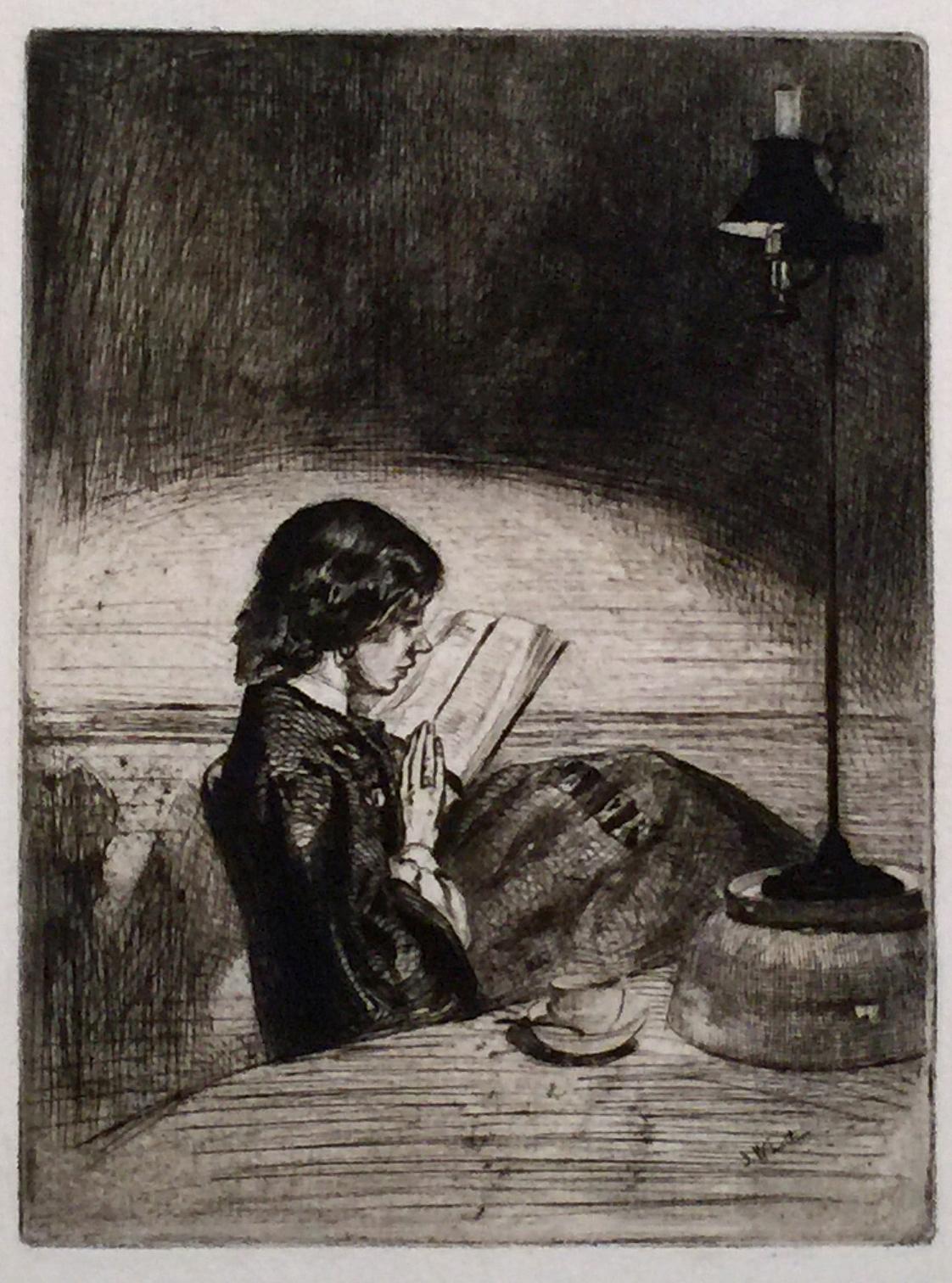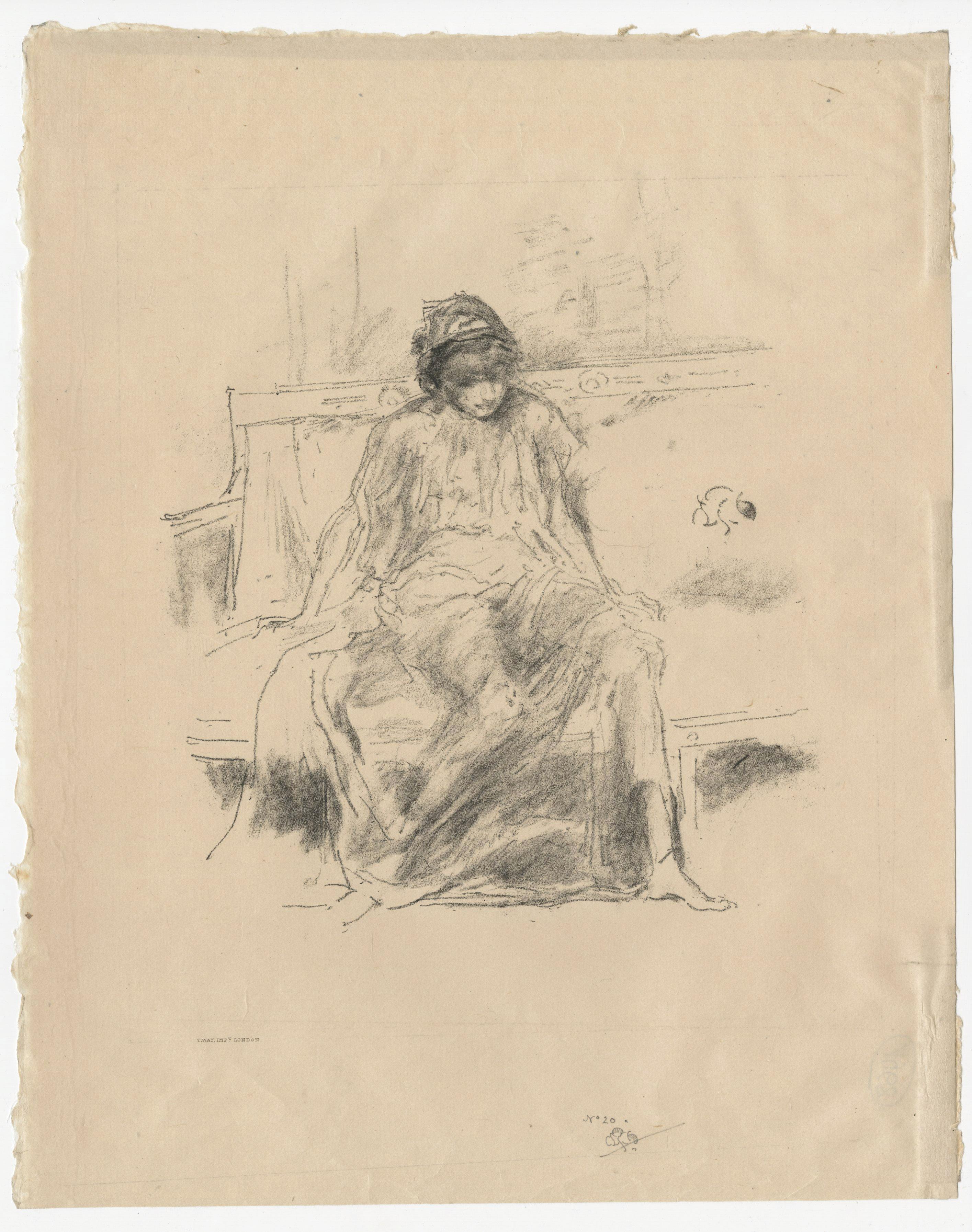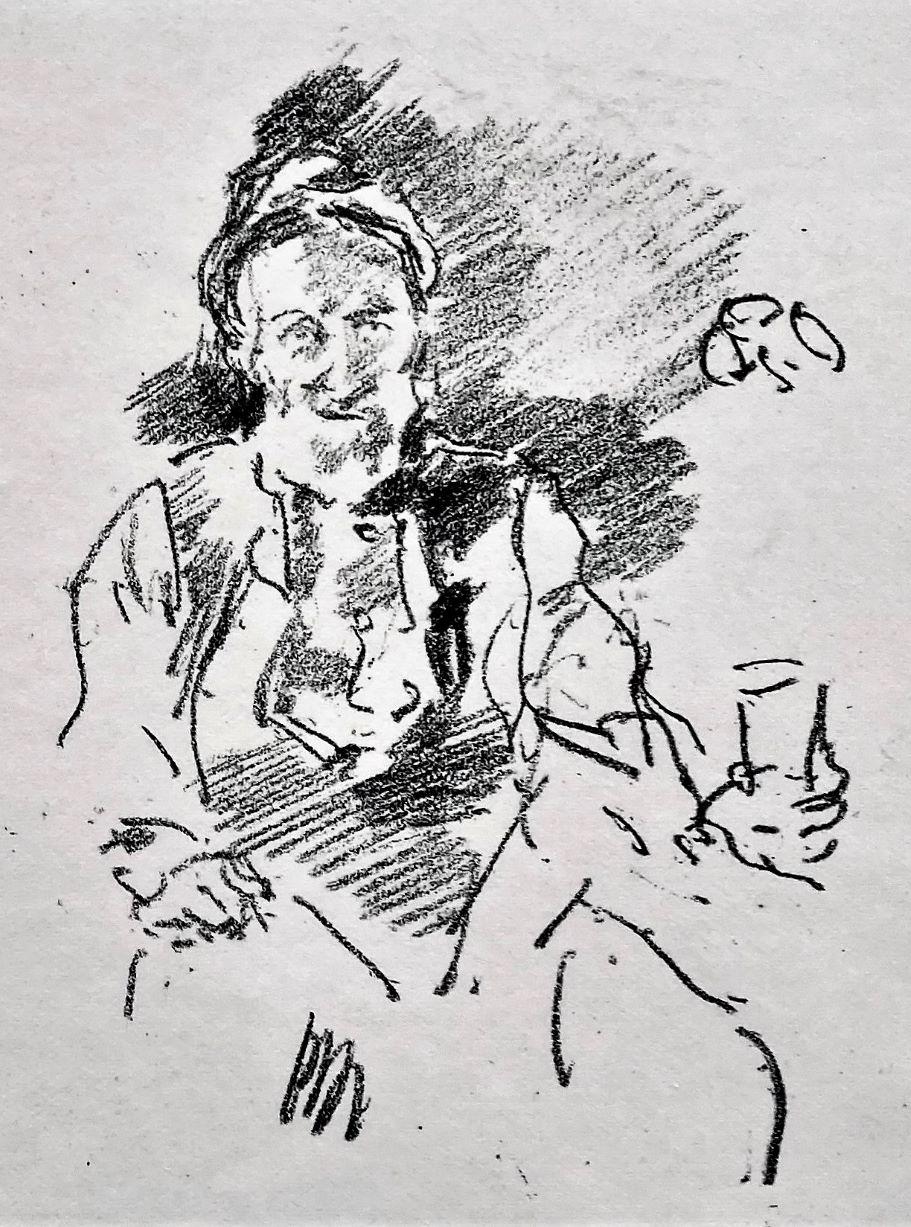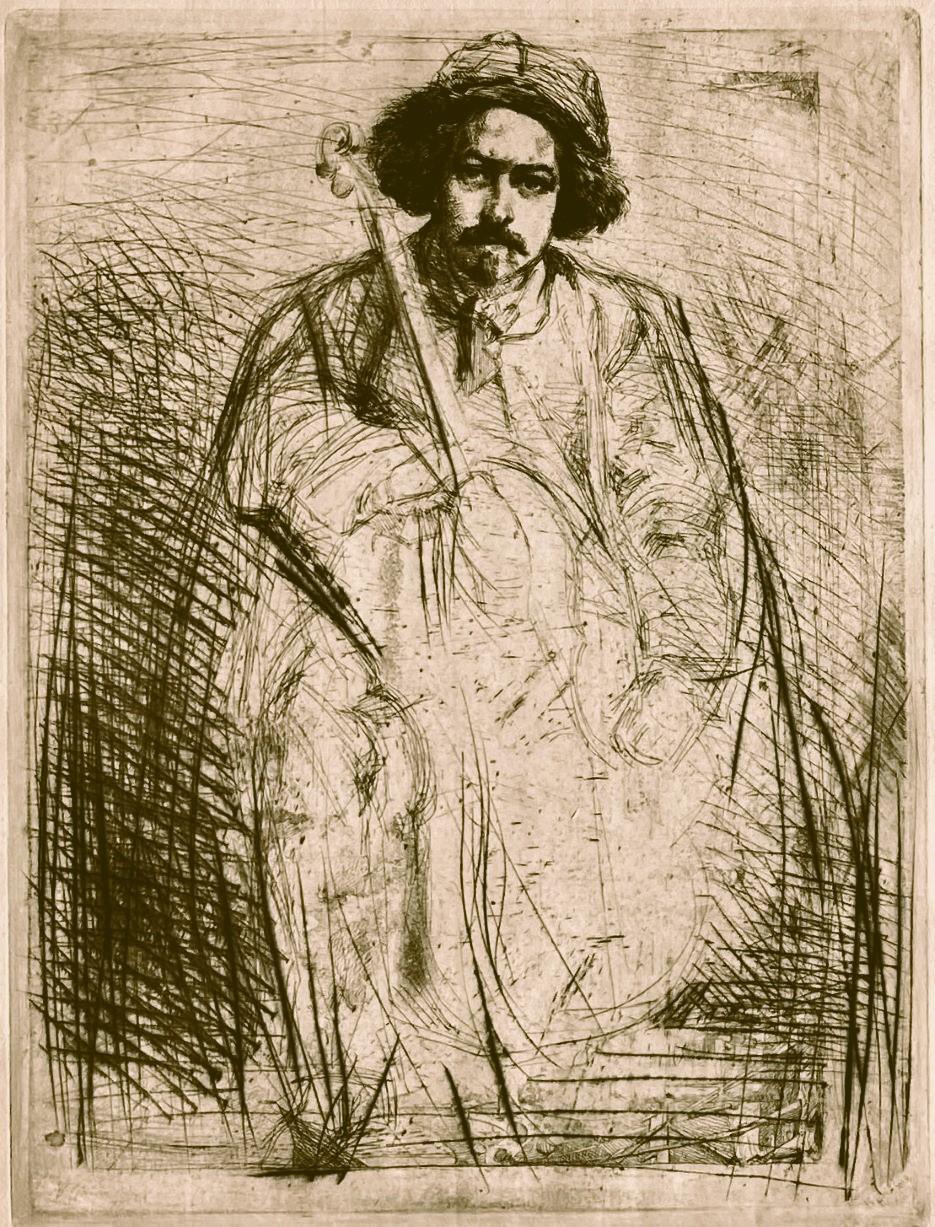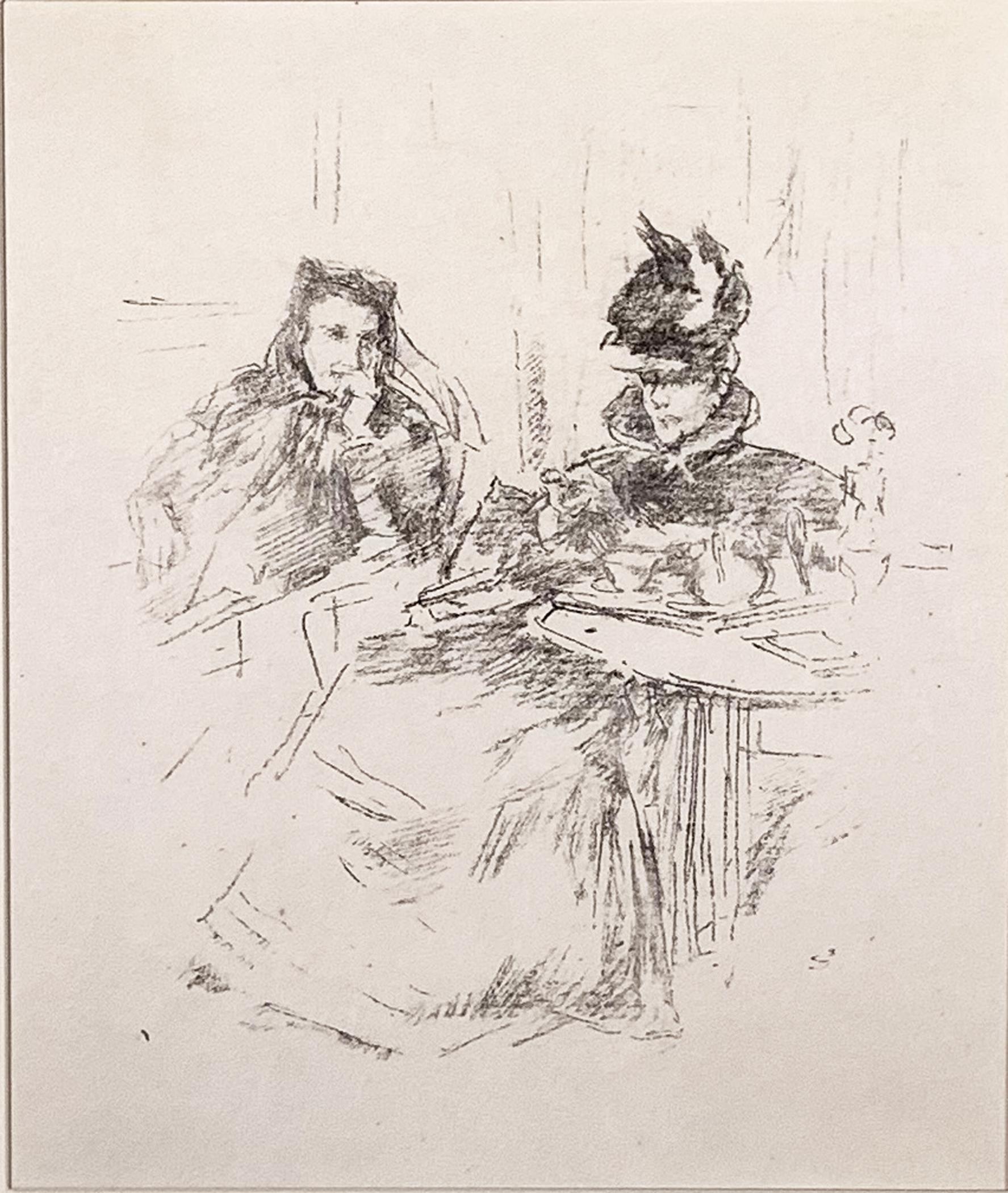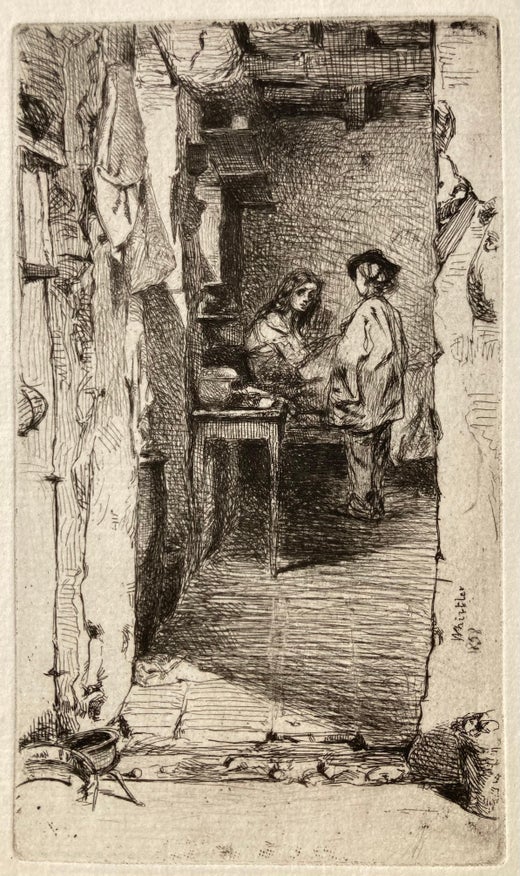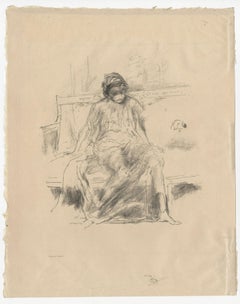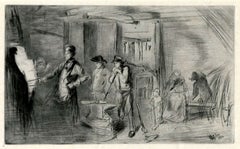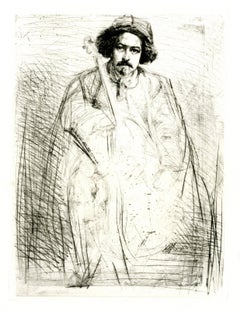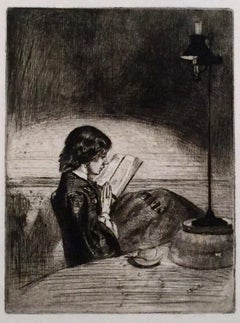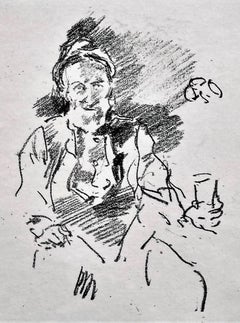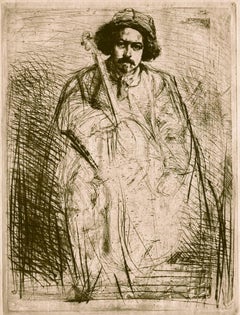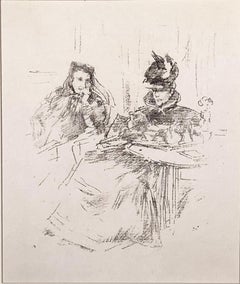James Abbott McNeill WhistlerReading1879
1879
About the Item
- Creator:James Abbott McNeill Whistler (1834-1903, American)
- Creation Year:1879
- Dimensions:Height: 6 in (15.24 cm)Width: 5 in (12.7 cm)
- Medium:
- Movement & Style:
- Period:
- Condition:
- Gallery Location:Fairlawn, OH
- Reference Number:Seller: FA96101stDibs: LU14015483932
James Abbott McNeill Whistler
James Abbott McNeill Whistler was an American artist active during the American Gilded Age and based primarily in the United Kingdom. Whistler was born on July 11, 1834, in Lowell. During his formative years in Paris in the 1850s, Whistler was influenced by the injunctions of the poet and theorist Charles Baudelaire that artists should take subjects from modern life and seek a new beauty in the teeming cities. Whistler's first major suite of prints, his French Set brought critical acclaim but disappointing sales. Seeking more generous patrons, he moved to London in 1859. Initially, under the influence of his brother-in-law Francis Seymour Haden, a pioneer of the etching revival, he began a series of superbly observed and finely detailed views of the River Thames with its shipping, thriving wharves and picturesque characters. In his Thames Set etchings, Whistler often introduced the figures of workmen, boatmen or loungers in the foregrounds. Whistler died on July 17, 1903, in London.
- ShippingRetrieving quote...Shipping from: Akron, OH
- Return Policy
More From This Seller
View All1890s American Impressionist Nude Prints
Lithograph
1890s American Impressionist Nude Prints
Lithograph
1860s Impressionist Figurative Prints
Drypoint
19th Century Impressionist Portrait Prints
Drypoint, Etching
1890s Aesthetic Movement Figurative Prints
Lithograph
1910s Impressionist Portrait Drawings and Watercolors
Graphite
You May Also Like
1850s Portrait Prints
Drypoint, Etching
The Master Smith. 1895. Lithograph. Way 84; Levy 123; Tedeschi, Stratis and Spink 120.i/ii. 4 1/2 x 5 1/2 (sheet 76 x 5 3/8). Only 15 lifetime impressions (in 2 states) were listed by Way; Goulding printed 38 impressions on 14 December 1903. The stone was erased in 1903. Printed on cream wove proofing paper. Monogrammed with the butterfly in the stone. A fine impression of this extremely rare lithograph.
Tedeschi, Stratis, and Spink write, page 366: As originally transferred to stone, the image includes trial marks made with a pointed crayon to the left of the sitter's shoulder. There is also a smudge at lower right below the image and a small stry mark upper right. Only one impression of this state has been located. Now in the Britigh Museum, London, it once belonged to Thomas Way and is illustrated in the Levy (1975) catalogue.' The impression illustrated above lacks the stray mark on the right, as the sheet is too small to accommodate it.
Tedeschi, Stratis and Spink write, page 366: 'This portrait of George Govier, was drawn ad the master smith conversed with the artist during a break from his work. Govier was born in Lyme Regis...
Late 19th Century Impressionist Figurative Prints
Lithograph
Mid-19th Century American Impressionist Figurative Prints
Drypoint, Etching
1890s Figurative Prints
Lithograph
Early 1900s Prints and Multiples
Offset
Late 19th Century Realist Figurative Prints
Vellum, Lithograph
